Optimizing waste heat recovery systems for more efficient, sustainable operations
P. DANESI and S. MILANESI, Exergy International Srl, Olgiate Olona, Italy
According to the International Energy Agency (IEA), oil and gas operations are responsible for around 15% of total energy-related emissions globally—the equivalent of 5.1 Bt of greenhouse gas emissions. However, the sector is behind on its energy transition targets that call for a significant reduction on emissions by 2030.
For the oil and gas industry, several technologies are available to reduce operational emissions intensity and reach a 60% reduction in emissions by 2030, as sought in the IEA’s Net-Zero Emission by 2050 scenario. Improving energy efficiency of oil and gas operations is one of the key measures. Even small-scale efficiency improvements throughout the oil and gas value chain can translate into big impacts on global carbon reduction. In Accenture’s “Decarbonizing Energy” study, analysts estimate that approximately 700 MMt of carbon dioxide (CO2) direct emissions from oil and gas activities could be avoided by deploying energy efficiency and circular solutions.
Leveraging untapped waste heat potential in gas infrastructure networks. In the natural gas sector, recovering available waste heat from processing operations and converting it into carbon-free electricity can represent a significant opportunity to reduce emissions and increase energy savings. Gas turbines—employed for natural gas compression and in regasification terminals—reject approximately 50% of the energy contained in the fuel into the atmosphere through its exhaust system. Considering this factor, the potential of the waste heat available and untapped is significnat. The Knowledge Center of Organic Rankine Cycle’s (KCORC’s) “Thermal Energy Harvesting” study estimated a technical potential of 18.4 TWhel of electricity for a 3.6 GWel installable capacity that can be produced from waste heat available in the European gas supply infrastructure (TABLE 1).
|
|
Technical potential |
Installed capacity |
|
LNG and GTL liquefaction plants |
10.6 TWhel |
1.5 GWel |
|
Regasification units/LNG terminals |
7.8 TWhel |
2.1 GWel |
|
Total |
18.4 TWhel |
3.6 GWel |
TABLE 1. The potential for waste heat recovery by means of ORC power plants from Europe’s natural gas supply infrastructure network. The technical Potential = wasted thermal energy convertible into electricity, while installed capacity = total power capacity that could be installed. Source: KCORC.
In the “Waste heat-to-power Market Assessment” prepared for the U.S. Department of Energy in 2015, the analysis identified a total estimated waste heat-to-power (WHP) technical potential of 1,102 MWe from 1,300 sites along the U.S. natural gas pipeline transmission network.
Because of the difficulty to collect updated information about the amount and temperature level of the thermal energy discarded to the atmosphere worldwide and considering that data are often not collected or are not available to the public, the actual amount of recoverable thermal energy estimated by the available studies is expected to be remarkably higher.
ORC technology for waste heat recovery. When it comes to recovering waste heat to convert it into electricity, ORC is the ideal technology, especially for low- to medium-high temperatures applications (90°C–400°C) or for small power sizes.
An ORC is similar to the traditional steam Rankine cycle widely employed in power stations—it differs in the use of organic substances instead of water as a working fluid for the cycle. The organic working fluid has a lower boiling point and higher vapor pressure than water and is therefore able to use low-medium temperature heat sources to produce electricity more efficiently than a steam cycle. Organic fluid (primarily hydrocarbons or refrigerants) is chosen to best fit the heat source, thus obtaining higher efficiencies.
Operational flexibility with high efficiency at varying load cases, the possibility to avoid the use of water and lower maintenance costs are some of the advantages ORC technology has over the steam Rankine cycle. These advantages are the reasons ORC technology has been the preferred choice for waste heat recovery installations in the industrial sector for the last several decades. TABLE 2 provides a comparison of ORC technology and the steam Rankine cycle.
|
Features |
ORC waste heat recovery plant |
Steam waste heat recovery plant |
|
Temperature of heat source |
Suitable for a wide range of temperatures > 150°C for low- to medium-power sizes |
Suitable for high temperatures > 260°C |
|
Cycle configuration |
Simple for the ORC cycle, but more complex considering the whole waste heat recovery system |
Complex |
|
Cycle flexibility |
High |
Low |
|
Efficiency |
High efficiency even in off-design conditions |
High at the design point for large kilns, low efficiency at partial load |
|
Water consumption |
No water consumption with an air- cooled condenser |
High |
|
Type of expansion |
Dry expansion with no possibility of blade erosion |
Risk of steam condensation and blade erosion |
|
Personnel |
Automated plant, so there is no need for dedicated personnel onsite |
Highly skilled dedicated personnel needed for operations |
|
Maintenance |
Low maintenance needs and costs, remote control |
Complex maintenance and high costs |
TABLE 2. Comparison of ORC vs. steam Rankine cycle
In 2010, the authors’ company introduced an innovative turbinea applied to the ORC cycle which improves the efficiency and flexibility of these systems and increases the competitiveness in the ORC marketplace.
The use of the proprietary turbinea (FIG. 1) in ORC systems provides several benefits when compared with systems using axial or radial inflow turbines. Due to its radial configuration and technical features, the proprietary turbinea provides:
- Higher efficiency: It provides a natural accommodation of working fluid expansion through the radial outflow arrangement of the turbine stages; it includes up to nine stages on a single disk turbine, reducing the size and length of the turbine vs. axial turbines; there is less tip leakage and disk friction losses; and provides a minimum 3D effect due to the low blade height and low blade height variation.
- Less limitation on cycle pressure, leading to a superior flexibility that extends the range of application.
- Multiple pressure admissions on a single disk turbine, enabling a more competitive and efficient exploitation of resources.
- Simpler construction technology, more compact and easier to transport and install.
- No gearbox is needed due to the low rotational speed of the turbine that allows for a direct coupling with the generator.
- Lower vibrations, leading to a longer life of the plant.
- Easy and low-cost maintenance. The patented mechanical group of the turbine containing the bearings, oil lubrication system and seals can be easily removed without the need of draining the organic fluid away from the cycle. This also dramatically reduces the downtime of the plant during maintenance—work can usually be completed in 1 d.
All these advantages lead to competitive, flexible and efficient ORC systems, allowing a high level of customization to adapt to specific project requirements.
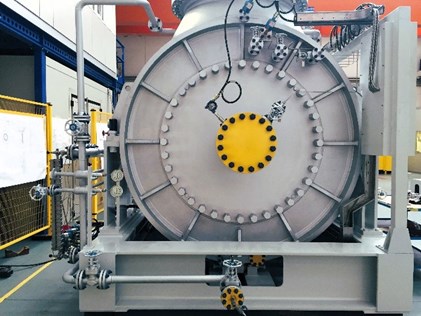
FIG. 1. A proprietary radial outflow turbinea for oil and gas applications.
Waste heat recovery opportunities in the natural gas sector. For the natural gas sector, there are several options available to recover waste heat by using ORC systems and turbines. One of the more traditional and proven applications of an ORC waste heat recovery system is in gas turbines driving compressors in pipelines. In the gas compressor station, this application can be an extremely efficient solution to produce power in all operating conditions. The primary advantages are:
- There are no impacts on gas turbine flexibility, but a very quick ORC response to transient conditions.
- The possibility of heat recovery from multiple units operating in parallel. One ORC unit applied to multiple gas turbines driving the station can increase the power output by up to 40%, thus optimizing cost and efficiency.
- The possibility to use ORC output either for power generation or as a mechanical power back-up.
Other advantages to consider are related to operational and environmental footprint. Gas compressor stations are often located in isolated/remote areas with limited access to water supplies and are frequently operated remotely without permanent staff onsite. These limitations have no impact on the feasibility of ORC installations. ORC systems can work without water and do not need any operator onsite—they are fully automated systems that can be controlled remotely.
TABLE 3 shows data from a case study for recovering available waste heat from three gas turbines in a gas compressor station (FIG. 2). The average total heat available was 43,290 kilowatts per hour (kWh) at around 500°C. By transferring heat to the ORC by a heat transfer oil circuit, it is possible to generate 12 MWe power for an annual average electricity production of 82,616 MWhe.
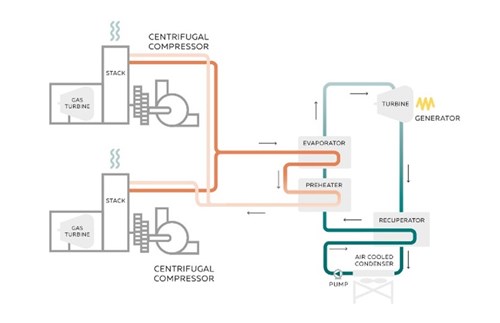
FIG. 2. ORC cycle scheme for waste heat recovery from a gas compressor station.
|
Waste heat resource data |
|
|
Number of gas turbines |
3 |
|
Exhaust gases’ inlet temperature to each waste heat recovery unit, °C |
492 |
|
Exhaust gases’ outlet temperature from each waste heat recovery unit, °C |
160 |
|
Exhaust gases’ mass flowrate from each gas turbine, kg/sec |
117.9 |
|
Average total heat available, kWr |
43,290 |
|
Thermal oil circuit data |
|
|
Thermal oil inlet temperature, °C |
310 |
|
Thermal oil outlet temperature, °C |
130 |
|
Total required thermal oil mass flowrate, kg/sec |
114 |
|
ORC performance |
|
|
Gross power at generator terminals, kWe |
12,185 |
|
Net ORC power, kWe |
11,370 |
|
Gross efficiency, % |
26.1 |
|
Net efficiency, % |
24.3 |
|
Cooling air temperature at the ACC inlet, °C |
17.4 |
|
Annual average electricity production, MWhe |
82,616 |
TABLE 3. Case study for waste heat recovery from three gas turbines.
Thermal energy is not the only type of recovery possible in the natural gas sector. An interesting application to enhance the efficiency of gas operation through other types of energy recovery is offered in gas pipeline pressure let-down (PLD) stations. IN PLD stations located at various steps along the pipeline network, gas pressure is reduced to allow the safe distribution to local grids to serve industrial, commercial and residential end users. The pressure reduction is normally achieved in a PLD station by using throttling valves. In this process, a high amount of potential energy—available as high-pressure difference—is completely lost in the throttling process.
This unused energy can be efficiently recovered to produce zero-emissions electricity through a gas expander. In this system, a heat exchanger for gas preheating is positioned upstream of the expander, while the PLD station’s throttled valves are replaced with the expander (turbine). A generator is coupled with the expander to produce electricity while achieving, at the system’s outlet, the desired pressure and temperature for natural gas distribution.
The authors’ company has developed a natural gas expander system that integrates into existing PLD natural gas stations to increase the efficiency and sustainability of the gas distribution system. This solution has been conceived to allow a very high level of customization to maximize efficiency. Depending on the process conditions and requirements, it is possible to tailor the system’s design by choosing among three different configurations using a proprietary radial outflow turbinea, radial-axial or fully axial expander, thus achieving the highest performance. The system can increase PLD efficiency by up to 80%.
For example, a PLD station with a 100,000 Sm3/hr gas flow and an expansion ratio from 50 bar to 5 bar, around 5 MWe of electricity could be produced using a configuration with the authors’ company’s high-speed axial turbine. With an expansion ratio of 50 bar to 15 bar, approximately 3 Mwe of electricity could be produced (FIG. 3). This solution achieves an efficiency of 80%, while the average efficiency of standard turbines employed in these systems is approximately 70%.

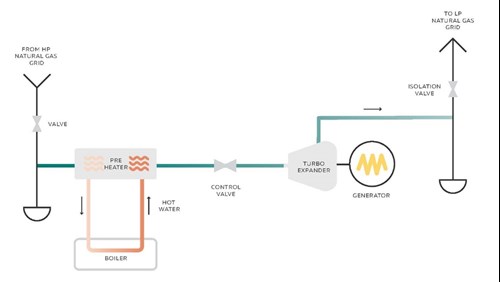
FIG. 3. Waste heat recovery with a gas expander in PLD stations.
Cold energy recovery in a LNG regasification terminal. An interesting application of the ORC technology in the LNG sector is the potential recovery of cold energy available from the regasification processes.
During liquefaction, natural gas is liquefied by cooling at cryogenic temperatures (approximately -160°C at 1 atmospheric pressure)—this process is needed for volume reduction and to ensure ease of transportation and storage. Natural gas refrigeration is an energy-intensive process. The energy consumed during this process is approximately 500 kWh/t of LNG produced1, which correspond to roughly 3.6% of natural gas’ lower heating value. Before being delivered via transportation and distribution networks, LNG must be pressurized to 80 barg–120 barg and returned to a gaseous state. The regasification occurs in vaporizers at LNG import terminals. Conventional vaporizer types include submerged combustion vaporizers (SCV), open-rack vaporizers (ORV) or intermediate-fluid vaporizers (IFV). For ORVs and IFVs, the heat source is seawater. In SCVs, a fraction of natural gas is combusted, and the flue gases heat a pool of water that provides heat to LNG. In all these types of vaporization processes, a considerable amount of energy used in the liquefaction phase (around 28%) is wasted. Additionally, these processes are energy intensive, as they require the consumption of electrical energy (for LNG and water pumps in ORV) and/or regasified gas for SCV.
ORC technology offers an efficient and market-available solution to harness the cold energy potential from LNG and make the process more efficient and sustainable. A cold energy plant (CEP) based on ORC technology regasifies LNG and converts the heat absorbed from seawater into electricity by recovering the valuable energy content of LNG.
The authors’ company’s research and development efforts have brought to patent an innovative CEP that can achieve high efficiency due to the use of a proprietary radial outflow turbinea combined with a multi-level condensation cycle. Conventional ORC systems are characterized by a single level of condensation and the use of propane, R13, R22 or R23 working fluid. This single-condensation plant configuration is characterized by a condensation curve that does not match the LNG vaporization and strongly limits the turbine expansion, thus the ORC plant power production.
To overcome this ORC performance limitation, the authors’ company developed and patented a multi-level condensation ORC CEP. The goals of this technology is to utilize LNG heat sink—at its maximum—along the vaporization curve and increase the cycle efficiency; therefore, maximizing the electrical power production at a requested regasification rate. The patent allows up to four levels of condensation, with the use of a single feed pump in the ORC circuit and the authors’ company’s proprietary radial outflow turbinea. The multi-level condensation, single-feed pump has several advantages:
- A higher cycle efficiency, increased specific power production and a higher cold-energy-recovery factor than a single level.
- A single-pump configuration, enabled by using a throttling valve at a high-pressure condenser’s outlet. Having a single, low-suction pressure pump reduces ORC plant complexity, a smaller capital expenditure, a lower number of critical equipment exposed to cryogenic temperatures, reduced operational halts for maintenance and higher plant availability.
- It is suitable for the use of propane as a working fluid, which is one of the best performing hydrocarbons with high market availability at low costs. In fact, propane has already been successfully employed in conventional IFVs and many cryogenic applications. Other advantages of propane include a low global warming potential of < 10, and a moderate vacuum in low pressure condensers (> 0.1 bara).
Additional advantages are specifically connected to the use of the authors’ company’s proprietary radial outflow turbinea:
- The isentropic efficiency of the proprietary radial outflow turbinea is high both in on- and off-design conditions due to the optimization of velocity triangles, multiple reaction and action stages, and the natural radial increase of the passage area that can expand high volumetric flow ratios.
- The proprietary radial outflow turbinea configuration naturally allows spillages between stages in a single-disc turbine; therefore, can enable the multi-level condensation pressure level ORC in a single machine—there is no need for multiple turbines at different pressure levels.
- The proprietary radial outflow turbinea shaft length, unlike the axial turbines, does not need to be increased to make room for the spillages point clearance, avoiding several rotor dynamic problems for overhung configurations.
- The low rotational speed of the proprietary radial outflow turbinea provides direct drive, avoiding the need for additional gearboxes.
FIG. 4 details the patented multiple condensation levels ORC plant in a two-condensation pressure level configuration.
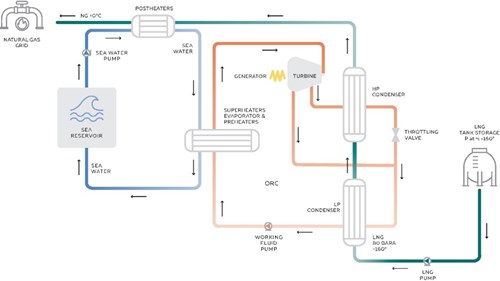
FIG. 4. The authors’ company’s multi-level condensation ORC CEP in a two-pressure level configuration.
FIG. 5 provides a 3D model of the authors’ company’s multi-level condensation ORC CEP in a two-pressure level configuration.
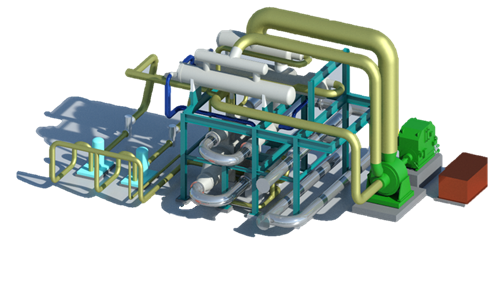
FIG. 5. 3D model of the authors’ company’s multi-level condensation ORC CEP in a two-pressure level configuration.
Even though the patent allows up to four levels of condensation, currently, two-levels of condensation have resulted as an optimum compromise among efficiency, plant complexity and overall capital expenditure.
In the following case study involving a 1-MMtpy LNG regasification plant, it is possible to produce 4.3 MWe using the authors’ company’s patented CEP. Net power production increased by 18%, with CO2 emissions reducing by approximately 10,000 tpy.
TABLE 4 provides the case study’s description, as well as a comparison of the authors’ company’s two-pressure level ORC vs. a conventional ORC.
|
Case description |
||
|
LNG regasification capacity |
1 MMtpy |
|
|
LNG flow to the ORC |
180 t/hr |
|
|
LNG inlet temperature |
-157°C |
|
|
Temperature of natural gas required |
10°C |
|
|
Seawater’s inlet temperature |
18°C |
|
|
Allowed ∆T of the seawater |
4°C |
|
|
ORC working fluid |
Propane |
|
|
ORC performance |
||
|
|
Authors’ company’s two-pressure level ORC |
Conventional ORC |
|
Turbine outlet temperature |
-60°C |
-48°C |
|
Net electric power |
4.3 MWe |
3.7 MWe |
|
Specific power production |
0.087 MJ/kg |
0.074 MJ/kg |
|
Net electricity production |
37 GWh/yr |
32 GWh/yr |
|
Yearly savings* |
$7.935 MM |
$6.877 MM |
|
CO2 avoided** |
9,600 tpy |
8,300 tpy |
* Average electricity price of 205 €/MWh ($217 MWh)
** Emissions factor of 260 gCO2/kWh
TABLE 4. The case study’s description, including a comparison of the authors’ company’s two-pressure level ORC vs. a conventional ORC.
Presently, cold energy utilization accounts for < 1% of its total potential; however, approximately 2.5 GWe could be produced from its exploitation, which could be further boosted by climate change policies.
Takeaway. In the natural gas value chain, the potential of waste heat is significant. Recovering and reusing it offers a unique opportunity for energy efficiency improvements and carbon footprint reductions in operations.
NOTE
a Exergy’s Radial Outflow Turbine (ROT)
ABOUT THE AUTHORS
Paolo Danesi earned a chemical engineering degree from La Sapienza University. He has extensive experience in business development and sales in international markets in the field of energy, heavy industry and engineering. Prior to Exergy, he worked for Alfa Laval, Sofinter and Fata Hunter. Danesi has been with Exergy since 2023. His primary role is sales/business development with offices/teams in Italy, Turkey and Malaysia.
Sara Milanesi is a communication professional with 20 yr of experience, working for various public relations, consultancy agencies and energy companies. She is skilled in corporate communications and in business-to-business marketing strategies to support sales growth. She has been with Exergy since 2015 and is responsible for communications and marketing.




Comments